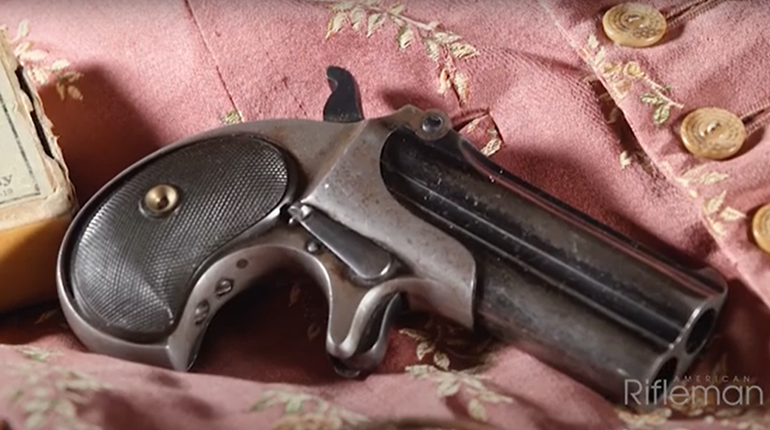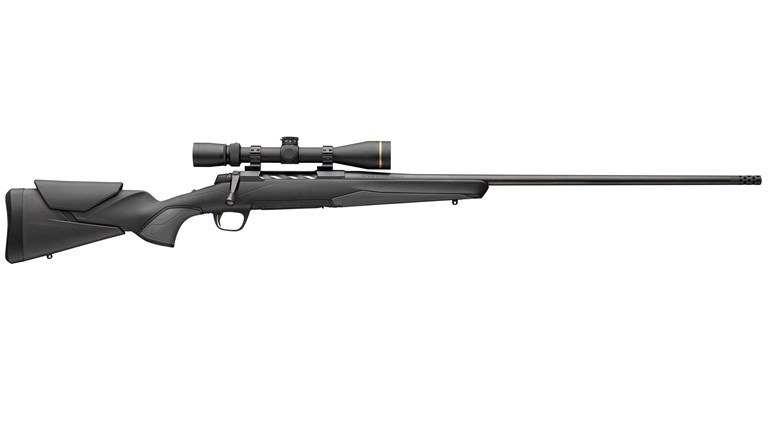
Since people began carrying defensive handguns, just about every carry method that you can imagine has been tried out and put into play. A natural form of evolution has left us with the defensive carry methods that work in the real world. However, it is not a matter of what is popular at the time but, rather, what works best for you. Physical condition, infirmities, dress habits and work habits all come into play when a person is seriously considering the best defensive holster.
Probably the most useful and most common method is carrying the pistol on the strong side hip. The pistol is closest to-and protected by-your strong hand. When drawn, the pistol is brought up and onto target in virtually a straight line. For concealment purposes, the pistol holster is located either just behind the hip bone, or just in front of it. From either position, this can produce a quick draw with some practice.
The length of the usual covering garment dictates whether the pistol should be worn inside the waistband or outside, since concealment is critical. If you choose an inside-the-waistband holster, the pants or skirt ought to be a size larger than you usually wear, in order to allow for the extra width of the gun and holster. If you wear it on the outside, you should be sure that your jacket is long enough to completely conceal even the bottom edge of the holster.
However, some folks may have a little trouble making a comfortable draw from such strong-side holsters. Either due to age or some shoulder injury, some people find it difficult to raise their shoulder high enough to quickly access the handgun. In this case, a cross-draw holster or shoulder holster may be a better choice.
The cross-draw holster is generally worn in front of the hip on the support side of the body (the left side for right-handed shooters, and vice versa). The shoulder rig is worn on the same side, under the arm. And the shoulder rig has the added advantage of also carrying extra ammunition on the strong side, making the shoulder-holster rig one unit for carrying the pistol and ammunition.
Another advantage of the cross-draw holster and shoulder holster is that the defensive handgun is more readily accessible when the shooter is seated (or uses a wheelchair). If you spend most of your day seated behind a desk or behind the wheel of the car, these may be the best choices for you. As an example, I usually carry my handgun on my strong-side hip, but find it difficult to get to when I am all belted in and driving my vehicle. For this reason, when a lot of driving is the order of the day, I nearly always put on a shoulder holster.
One important consideration for the cross-draw and, to a certain extent, the shoulder holster is making sure that the covering garment is fastened so that it won't blow open and expose the handgun. A jacket, only partially zipped or buttoned, works pretty well for this type of concealment. Instead of unfastening the jacket, one simply goes in over the bottom fastener and accesses his pistol.
For a time the small-of-the-back (also called an SOB) holster saw some popularity. This rig holds the handgun in almost a horizontal position behind the hip bone and in the vicinity of the spine. However, while it does conceal the pistol quite well, it has some serious drawbacks. For the seated shooter it is even more difficult to get to than conventional strong-side carry. The worst drawback, however, is that if one falls, or is knocked down, on his back the gun can impact the spine with the potential for causing serious injury.
Another carry method that provides a good deal of concealment is the ankle holster. This rig, usually well padded, straps to the leg at, or just above, the ankle. It is best used with small revolvers and autos, so it can be concealed by the pants. The biggest drawback is that this carry method is rather slow for getting the gun into action. It is worthy of consideration, though, especially for carrying a second gun.
For the new defensive shooter the best bet is to start working with a strong-side hip holster. You should take some training classes using this method to see how it works for you. If it just won't fit into your program as far as concealment, comfort and quick access, you can try some of these other carry methods. Chances are good that one of them will feel very natural, easy to conceal and quick to get into action.
Don't be afraid to experiment to see what works best for you. And don't be afraid to buy quality. Remember, when selecting defensive pistols and holsters, that this is equipment that you may very well have to bet your life on.







































